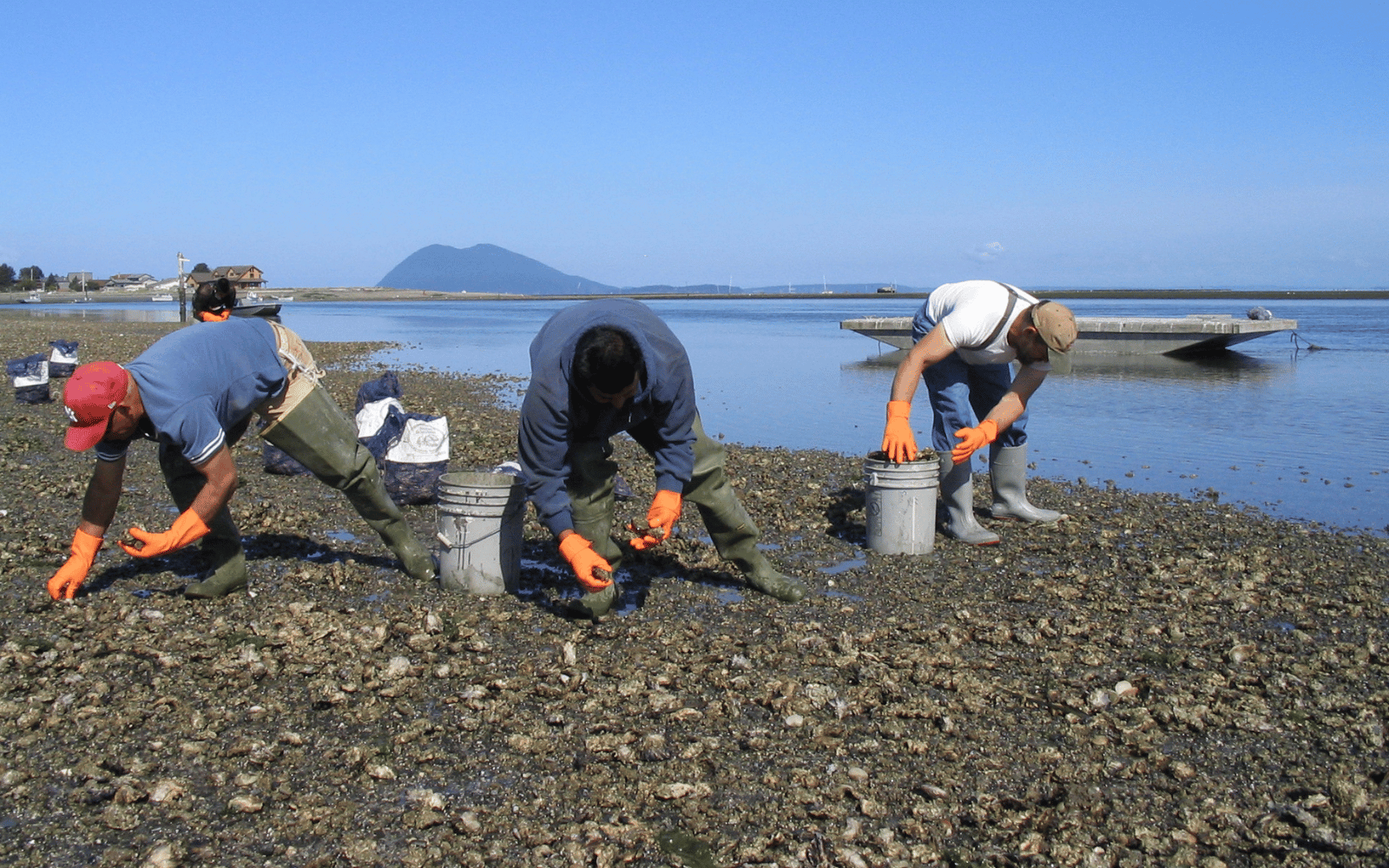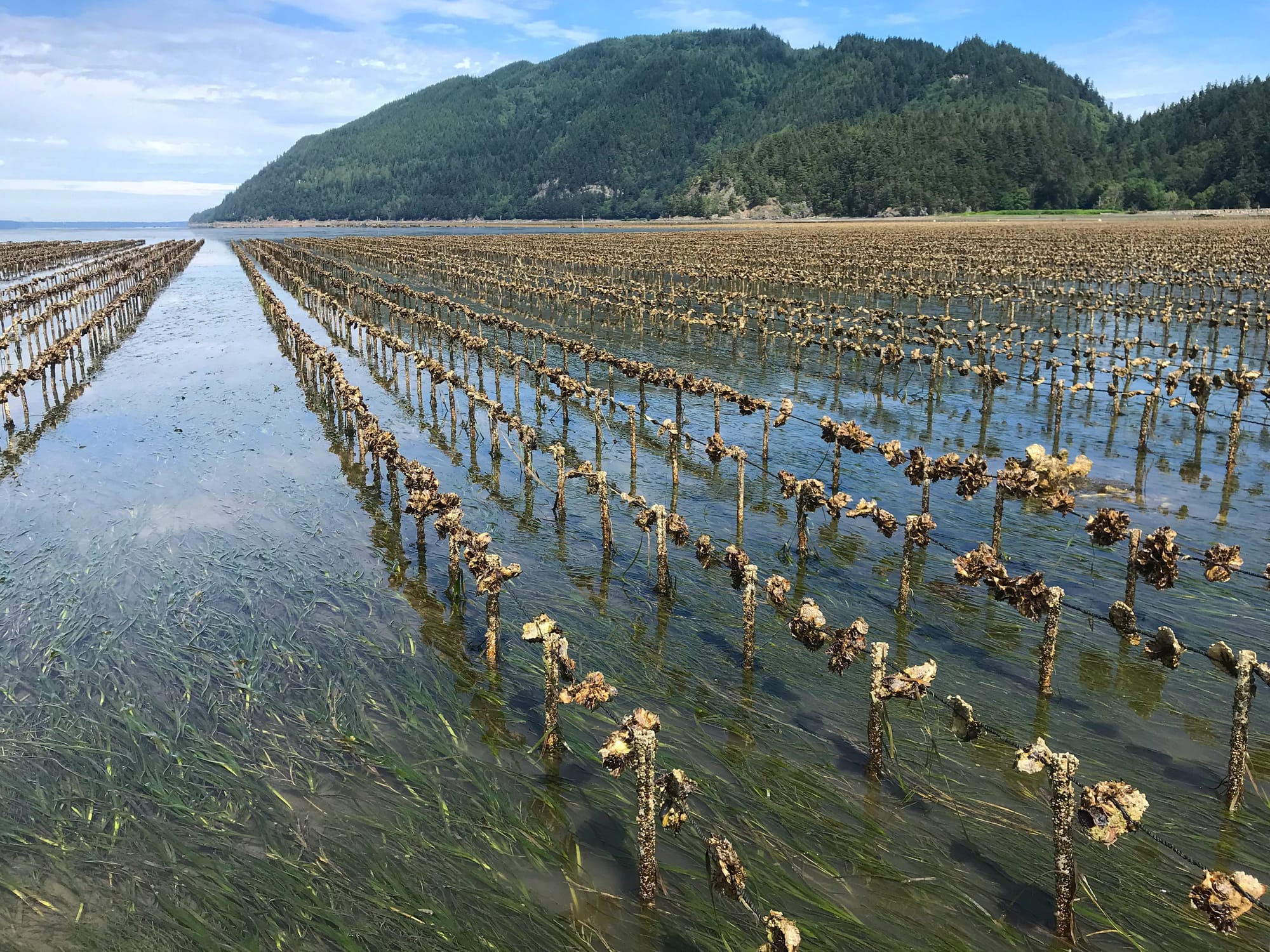Norovirus catches a free ride on the half shell, growers pay the price
Shellfish farms are limited in what they can do to combat contaminants but wet storage and epidemiology can help.

In December, Elizabeth Guzman got a call from the health inspector about a norovirus outbreak linked to the oysters she farms with her husband, Arnulfo Torres, in Shelton, Wash.
According to the health department, 18 people developed norovirus-like symptoms after an event in Seattle that served oysters from Ruco’s Shellfish, Guzman and Torres’ company. Reports from other restaurants in Washington and Oregon soon followed, and Ruco’s issued a recall.
Norovirus spreads fast, wreaks havoc and leaves people shuddering at the memory. Cases skyrocketed this year, with the number of outbreaks surpassing the national average for the past decade.
The Food and Drug Administration issued five shellfish recalls due to norovirus contamination between December and February, impacting several Pacific Northwest distributors. Washington’s shellfish industry employs thousands and brings in $150 million each year, according to a recent report from Washington Sea Grant.
“Anytime anyone gets sick from shellfish, it doesn’t help any of us that are selling shellfish,” said Bill Dewey, director of public affairs for Taylor Shellfish Farms, one of the largest producers of farmed shellfish in the country. People get spooked, and it's bad for business, he added.
Taylor Shellfish recalled product harvested in Canada in December, but their Shelton site was not impacted by the recent outbreaks. Rudy’s Shellfish, another Washington distributor, also recalled oysters from its Pickering Passage growing area due to norovirus.
For Guzman, the news was upsetting. She and Torres had just launched Ruco’s that October. Torres shared the growing site with his brother before they started Ruco’s.
“I was really sad,” Guzman said. “We were barely starting our company.”
Not three months later, they were stuck in limbo.
“My husband has had that beach for about six years,” Guzman said, “and they never had an issue like that.”

Because oysters are filter feeders, anything in the water can accumulate in their bodies, which we then eat raw, increasing the risk of food borne illness. In Washington, shellfish safety falls under the jurisdiction of the state health department. They monitor water quality at 1700 sites in Puget Sound and along the coast to guide commercial and recreational harvesting.
And when something goes awry, they investigate. Federal funding cuts have not impacted the shellfish program yet, but there could be a chain reaction from other federally funded programs or partners, health department officials told Future Tides in an email.
“Illness investigations are really a nationwide effort,” said Scott Berbells, Washington’s growing area section manager.
After the outbreak in Seattle, health department officials interviewed sick people and inspected prep and processing areas for health code violations. Finding none, they turned to the growers.
“If we can’t define that it came from retail or post-harvest processing, we have to do a precautionary closure of the growing area,” Berbells said.
That’s followed by a shoreline survey. Norovirus comes from untreated sewage, so his team looks for septic system failures, issues with wastewater treatment and contaminated freshwater runoff.
The team found no signs of ongoing contamination in South Puget Sound at either Hammersley Inlet, where Ruco’s operates, or Pickering Passage, home to Rudy’s Shellfish. Both growing areas remained closed for three weeks to allow for viral die-off.
Dewey, who has been in the industry for 30 years, said norovirus is a challenge. It can stem from undetected sources, such as improper waste disposal, and the oysters betray no sign of disease.
“Its not that common where the epidemiology leads back to the smoking gun,” he added. This leaves growers little choice but to trust the public health process.
Guzman said health department officials assured her that the outbreak was not their fault. A week after the growing area opened, they resumed harvesting and so far, it’s smooth sailing.

Small businesses are somewhat limited in what they can do to combat contaminants, but larger outfits like Taylor Shellfish are taking extra measures.
In partnership with scientists at Oregon State University, they designed sanitized saltwater holding tanks for oysters post-harvest. They reported that oysters kept at 52 degrees Fahrenheit for 24 hours will purge 95% of bacteria.
Viruses are harder to expel, said Dewey, but the system does make their product incrementally safer. The first tank was completed in 2021 and the second one, which holds 240,000 gallons of water and cost $10 million, was finished earlier this year.
Even so, “there’s always going to be a risk,” Dewey noted. “No matter how good your sampling and surveillance is.”
To prevent outbreaks, health department officials advise knowing where your shellfish comes from. Check for advisories before harvesting, brush up on safe handling and cooking protocol and remember to keep waste away from water.
